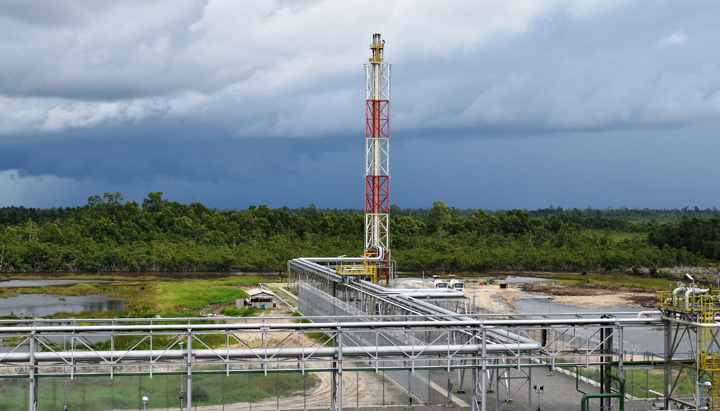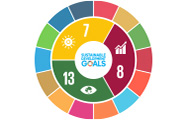Flaring
We are working to reduce flaring, which wastes valuable resources and contributes to climate change.
Flaring is used to safely dispose of hydrocarbons that could pose a hazard to workers, nearby residents and facility equipment during non-routine occurrences. These occurrences include start-ups, maintenance turnarounds and power failures where production system pressure must be safely relieved.
Gas produced alongside oil, known as associated gas, may also be flared when there are insufficient or no facilities to gather the gas.
As a signatory to the World Bank’s Zero Routine Flaring by 2030 initiative, we continue to pursue our 2015 commitment to eliminate associated gas flaring at facilities.
Flaring performance
Flaring of gas in our Upstream and Integrated Gas businesses contributed around 8% to our overall direct greenhouse gas emissions in 2019. Flaring increased to 5.9 million tonnes of carbon dioxide equivalent in 2019 from 5.2 million tonnes of carbon dioxide equivalent in 2018.
Flaring – upstream
million tonnes hydrocarbons flared
Enlarge imageFlaring – upstream
million tonnes CO2 equivalent
Enlarge imageThe increase in 2019 reflects an unanticipated spike in flaring during the start-up of the Prelude floating liquefied natural gas facility in Australia. We subsequently improved controls, and monthly flaring rates at Prelude fell by more than 60% as the facility moved towards stable operations.
In Australia, Shell affiliate QGC Pty Limited’s upstream coal-seam gas facilities also reduced flaring by 80% in 2019 compared with 2018. In the USA, flare reduction continued at our Permian unconventional oil facilities, while in Qatar our Pearl gas-to-liquids plant reduced its greenhouse gas emissions from flaring by more than 25% in 2019 compared with 2018.
Flaring can be used to safely dispose of associated gas where there is no infrastructure to capture it. In 2019, around 25% of flaring took place at such facilities, a decrease from around 40% in 2018.
In Nigeria, investments since 2010 by the Shell Petroleum Development Company of Nigeria Ltd Joint Venture aimed at capturing associated gas and commercialising it through domestic and export markets have decreased routine flaring by around 80% between 2010 and 2019. These investments include gas-gathering projects in Oloma, Adibawa and Otumara. Two key gas-gathering projects, Southern Swamp and Forcados Yokri, identified for work in 2019, have been delayed and are currently expected to be completed in 2020.

In Nigeria, investments to capture associated gas are helping to reduce flaring.
 Climate change
Climate change
 Sustainable development goals
Sustainable development goals
 Safety
Safety
 About our data
About our data
